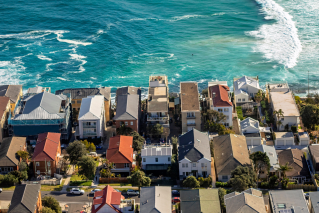RBA leaves interest rates on hold, as fuel prices raise inflation fears

The Reserve Bank has maintained its holding pattern for interest rates in October as skyrocketing petrol prices test the resolve of central bankers.
New governor Michele Bullock’s first meeting at the helm of the RBA on Tuesday was a picture of continuity, with few changes to the monetary policy statement from last month under her predecessor Philip Lowe.
The cash rate target remains on hold at 4.1 per cent, unchanged since June, and is tipped to stay that way at least for the rest of the year.
It comes despite fears a recent spike in petrol prices could spark more RBA action, with inflation proving unexpectedly stubborn during August.
Petrol prices have soared past $2.30 a litre in some parts of the nation this week as high global oil prices and a lower Australian dollar deliver a double whammy to motorists.
But while noting the bowser squeeze on Tuesday, Bullock said that “recent data are consistent with inflation returning” to the target band.
“The central forecast is for [Consumer Price Index] CPI inflation to continue to decline and to be back within the 2 to 3 per cent target range in late 2025,” Bullock said.
Oxford Australia head of macroeconomic forecasting Sean Langcake said central bankers are unlikely to change their tune on interest rates unless they lose confidence the economy is tracking to their forecasts.
“So long as their forecasts continue to look plausible they won’t be moving,” he said.
That’s the predominant view among other major forecasters too, with major banks predicting rates will remain on hold for the remainder of 2023 before central bankers mull rate cuts in the second half of 2024.
ANZ’s head of Australian economics Adam Boyton said there remains a risk that the RBA could raise rates one more time this year.
“The RBA appears reasonably comfortable for now, though,” he said.
“While the risks of additional RBA action might be rising, we see nothing in today’s decision or statement to push us off our view that the RBA is on an extended pause as it examines how the monetary tightening to date washes through the economy.”
RBA mulls economic risks
The RBA is aware of economic risks, with the trajectory for wages, productivity and consumption growth being key.
Langcake said that if productivity fails to pick up and wages growth continues to increase then the RBA will be concerned about inflation.
On the flip side, he noted that the monumental bowser squeeze will restrain household spending, which has slowed markedly following interest rate rises.
Central bankers want to see lower consumer demand because it limits the ability of businesses to raise prices without losing sales.
But higher fuel prices will add directly to inflation and may have secondary effects as the cost of transport increases throughout the economy.
That is why the RBA added fuel prices to its list of concerns in the October statement.
At least with interest rates on pause millions of families are enjoying relief from ongoing hikes in their mortgage repayments.
Monthly mortgage bills have risen more than $1100 for a typical $500,000, 25-year home loan since May 2022, when rates first began moving from record lows.
That has caused a huge increase in mortgage stress, with Roy Morgan on Tuesday estimating about 1.57 million Australians are now “at risk”.








